Commercial Water Damage Restoration – Disaster Recovery, Serving NJ, NY, CT & PA
OUR SERVICE AREA
|
Monmouth County Aberdeen Middlesex County Avenel Somerset County Basking Ridge Mercer County Bear Tavern Ocean County Barnegat Bergen County Allendale Essex County Academy Hudson County Arlington Hunterdon County Annandale Morris County Boonton Passaic County Allwood Sussex County Andover Union County Baltusrol Warren County Allamuchy Atlantic County Folsom Burlington County Beverly Camden County Albion Cape May County Anglesea Cumberland County Bivalve Gloucester County Almonesson Salem County Alloway |

Whatever the cause of your water damage, we can restore these issues back to their previous condition.
Rapid Response for any Commercial Water Damage Restoration
Free Consultation & Evaluation | How Water Damage Restoration Works | We Accommodate Businesses | Water Damage Category | Water Damage Tips
A flooded building could be devastating. Water seeps into carpeting, flooring, walls, and furniture, which could cause mold, rotting, or other damage that may go undetected until it’s too late.
Guaranteed services by well-trained professionals who care.
Whether your water damage has been created by severe weather or through poor plumbing, AllStates Restoration can help you with all your Commercial Water Damage Restoration. We understand you want to stay open and we’ll adjust for your schedule to help you keep your downtime to a minimum.
AllStates Restoration guarantees all of our restoration & cleaning services. If one of our Restoration & Cleaning Services is not done right for whatever reason, we will come back and fix it, Guaranteed!
Getting the restoration and drying job done quickly.
This level of emergency is the time to move as fast as possible. Insurance companies will most likely pay if the cleanup and restoration is performed by-the-numbers in a timely manner.
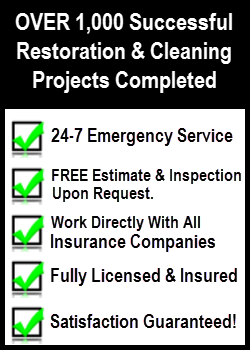
732-722-5211

We’ll help you get your damage clean and restore. All you have to do is Make The Appointment!

When you take a look at your insurance policy, you should see that it is the responsibility of the property owner to take action when there is a commercial water damage emergency.
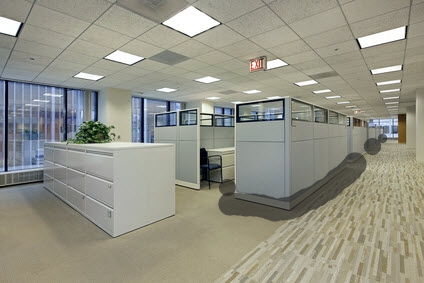 Immediate response is vital minimizing the loss in water damage jobs.
Immediate response is vital minimizing the loss in water damage jobs.
Water begins to evaporate on its own if the cleanup process doesn’t start right away. The air absorbs the evaporated water and redistributes the moisture to other items like ceiling tiles and drywall.
The result is secondary water damage that can significantly increase the claims cost. Some examples of secondary water damage include:
- Mold spores and odor start to colonize
- Hardwood floors begin to buckle
- Plaster and drywall sag and crack
- Vinyl loosens from the floor
Free Consultation, Evaluation and Estimate.
When you’ve got water damage in your office, store, or commercial building, call us for a free consultation. AllStates Restoration offers commercial water damage restoration, cleanup and dry-out services, 24-7 every day of the year. Call today!Your Free Consultation, Inspection & Estimate includes:
- Detailed inspection of your situation
- Address all of your clean-up and commercial restoration concerns
- Get all your questions answered
- Estimate in writing
- No pressure tactic, no obligation
To schedule your NJ Commercial Water Damage Restoration Free Estimate, also in NY, PA or CT Call Toll FREE 1-888-651-2532 or click here.
How Commercial Water Damage Restoration works
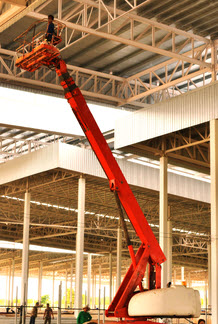 The first thing our IICRC (Institute of Inspection, Cleaning and Restoration Certification)-trained technicians will use special equipment to find out just how intense your commercial water damage problem really is. Once they’ve evaluated the damage, they’ll remove the standing water. The process differs depending upon whether the water is under the property (crawl space) or inside the building, including the basement.
The first thing our IICRC (Institute of Inspection, Cleaning and Restoration Certification)-trained technicians will use special equipment to find out just how intense your commercial water damage problem really is. Once they’ve evaluated the damage, they’ll remove the standing water. The process differs depending upon whether the water is under the property (crawl space) or inside the building, including the basement.
Under Property or/in the Crawl Space: We remove the water using an extractor to vacuum up standing water, so that everything is no longer soaking wet. If the cause was a broken pipe, we make that pipe plumber-accessible. Once the pipe is repaired we remove contaminated soil, spray anti-microbial, and then replace the bad soil with new, fresh soil if needed.
Inside the Building or in the Basement: We will get there in less than an hour when the water damage is inside your business. We vacuum up excess water using an extractor. We’ll remove furniture / products / material from the impacted area or put furniture on blocks. In case the water is dirty we get rid of carpeting and padding right away. If the water is clean, we dry the carpet where we can. Carpet pads are sometime removed, because it is cheaper to replace them in some cases, rather than dry them out. If water damage affects a wall, we will make small holes in the wall where the baseboard was (removed) and install heaters. This will allow warm air to dry the wall faster.
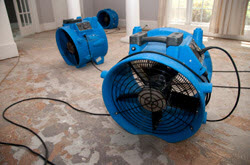
We do commercial Cleanup & Dry out job quickly so you can get back to work. Call 888-651-2532
From evaluation to completion, our experienced team is ready to handle all your restoration needs.
Let AllStates Restoration remove the water and dry out your property so your operations will experience the very least possible amount of downtime. We’ll be on-site at your property location within an hour to an hour-and-a-half. If you prefer, we will dry out your property after hours and remove our drying equipment in the morning which gives you the opportunity to reopen.
There are very tough protocols that need to be taken and implemented quickly when it comes to commercial water damage cleanup & restoration. Otherwise, your overall loss could be a lot higher than necessary. We have a proven track record since 2008 for effectively removing and drying water from businesses and saving wet items ranging from electronics to furniture, to essential paper documents and books.
The expertise to do it right
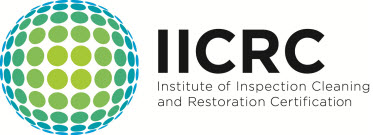 AllStates Restoration Services has the highest industry certifications in commercial Water Loss Management. Not only removing excess water, our IICRC-certified field technicians have the skills and equipment to dry out your facility (including substructure materials) completely back to pre-loss conditions.
AllStates Restoration Services has the highest industry certifications in commercial Water Loss Management. Not only removing excess water, our IICRC-certified field technicians have the skills and equipment to dry out your facility (including substructure materials) completely back to pre-loss conditions.
Our experienced technicians have used our state of the art drying equipment and procedures to restore hundreds of water damaged commercial buildings in New Jersey, New York, Pennsylvania and Connecticut since 2008. Our large inventory of the latest drying and dehumidification equipment includes water extractors, water pumps, commercial heaters, air-conditioners and dehumidifiers, as well hydroxyl generators to remove odor and air scrubbers and XXL dehumidifiers, which we use to dry out commercial buildings, large manufacturing facilities, and high-rise buildings.
Our friendly technicians can handle any size job using sophisticated drying approaches to restore soaked structural materials to their original condition. These same drying techniques could be used to slow down the growth of harmful pathogens like mold while saving furniture, flooring, electronics, documents, and books.
Commercial Flood / Water Damage Category Definitions
According the IICRC (Institute of Inspection Cleaning and Restoration Certification), which sets the standards for the cleaning industry and Commercial water damage restoration training, there are several different levels and classes involved in liquid destruction. From the IICRC’s S-500 standards, there are 3 categories describing the type of liquid involved. – To read more about Residential Water Damage Category Definitions ...
Commercial Water Damage Tips
- Ensure that the water source is shut down.
- Shut down power outlets and electric equipment in or near flooded areas if it’s safe to do so, otherwise stay away from the wet area.
- Remove paper products from the source of water immediately.
- Move artwork to a dry area.
- Mop up as much water as you can.
- Remove anything on the floor, including wet area rugs.
- Lift up wet cushions for even drying.
- Move furniture out of the effected areas if you can.
- Wipe down furniture to get rid of unnecessary moisture.
- Open drawers and closet doors to decrease drying time.
To schedule commercial water damage restoration appointment, call 732-722-5211 or click here.
